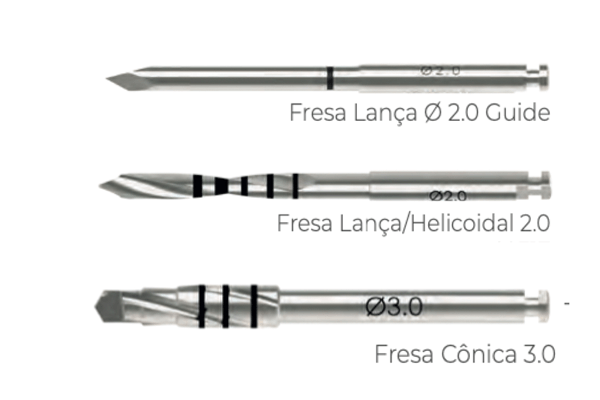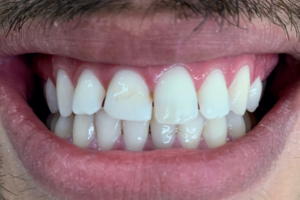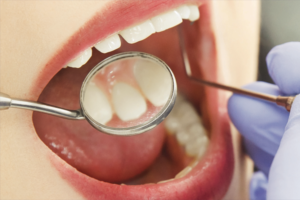Artigo científico observa o torque de inserção em dois tipos de implantes para carregamento imediato na maxila pelo método all-on-four.
AUTORES
Rafael Manfro
Mestre em Implantodontia – Unisa; Doutor em Implantodontia – SLMandic; Coordenador dos cursos de Cirurgia Avançada para Implantodontia – Abosc e Unisul.
Orcid: 0000-0002-7431-0170.
Gislaine Fernandes Felipe Garcia
Mestra em Implantodontia – SLMandic; Professora dos cursos de Cirurgia Avançada para Implantodontia – Abosc e Unisul.
Orcid: 0000-0002-6081-5012.
Marcelo Carlos Bortoluzzi
Doutor em Semiologia e Diagnóstico Bucal – PUC/RS; Professor dos cursos de graduação e pós-graduação – Universidade Estadual de Ponta Grossa.
Orcid: 0000-0003-2756-5047.
Vilton Zimmerman de Souza
Mestre em Implantodontia – SLMandic; Professor dos cursos de Cirurgia Avançada para Implantodontia – Abosc e Unisul.
Orcid: 0000-0002-3513-3650.
Mauricio Rosa
Especialista em Implantodontia – Funorte; Professor dos cursos de Cirurgia Avançada para Implantodontia – Abosc e Unisul.
Orcid: 0000-0002-3895-5983.
Vinícius Fabris
Mestre em Imaginologia – SLMandic; Coordenador dos cursos de Cirurgia Avançada para Implantodontia e do curso de especialização em Implantodontia – Elosul.
Orcid: 0000-0003-1037-4420.
Gabriel Oliveira
Mestre em Reabilitação Oral – Imed; Professor dos cursos de Cirurgia Avançada para Implantodontia e do curso de especialização em Implantodontia – Elosul.
Orcid: 0000-0002-1990-4347.
RESUMO
Objetivo: observar o torque de inserção em dois tipos de implantes para carregamento imediato na maxila pelo método all-on-four. Material e métodos: 32 implantes foram instalados em oito casos submetidos a esse tratamento, sendo 16 Due Cone, Implacil (grupo 1) e 16 Maestro, Implacil (grupo 2). Também foi observado se o comprimento e o diâmetro dos implantes influenciam na estabilidade primária. Resultados: os implantes do grupo 2 apresentaram estabilidade primária significantemente maior (66,56 Ncm), contra 52,81 Ncm do grupo 1. Os implantes maestro com diâmetro 4 mm apresentaram estabilidade primária maior em relação aos mesmos implantes de diâmetro 3,5 mm e aos implantes Due Cone (diâmetros 3,5 mm e 4 mm). Conclusão: nas limitações do estudo, foi possível observar que os implantes Maestro apresentaram estabilidade primária maior quando utilizados na técnica all-on-four em maxila. O comprimento dos implantes não influenciou o torque de inserção em nenhuma das situações propostas.
Palavras-chave – Implantes dentários; Estabilidade primária; Maxila edêntula.
ABSTRACT
Objective: to verify the insertion torque of two dental implant types for immediate loading in the maxillary arch using the all-on-four design. Material and methods: 32 implants were installed in 8 cases undergoing this treatment, 16 of which were Due Cone, Implacil implants (group 1) and 16 were Maestro, Implacil implants (group 2). It was also observed whether the length and diameter of the implants influence the primary stability. Results: the implants in group 2 presented significantly higher primary stability, 66.56 Ncm against 52.81 Ncm in group 1. For the Maestro implants, the 4.0 mm-diameter presented greater primary stability than the 3.5 mm-diameter groups. Also, the 4.0 mm Maestro was superior to the Due Cone (3.5 mm and 4.0 mm diameters). Conclusion: within the limits of this study, the Maestro implants showed greater primary stability when used in the all-on-four technique in the maxillary arch. Dental implant length did not influence insertion torque in all the above tested situations.
Key words – Dental implants; Primary stability; Edentulous maxilla.
Recebido em jul/2021
Aprovado em ago/2021
Referências
- Gallucci GO, Hamilton A, Zhou W, Buser D, Chan S. Implant placement and loading protocols in partially edentulous patients: a systematic review. Clin Oral Implants Res 2018;29(suppl.16):106-34.
- Kern JS, Kern T, Wolfort S, Heussen N. A systematic review and meta-analysis of removable and fixed implant-support prosthetic in edentulous jaws: post-loading implant loss. Clin Oral Implants Res 2016;27(2):174-95.
- Scala R, Cucchi A, Ghensi P, Vartolo F. Clinical evaluation of satisfaction in patients rehabilitated with an immediately loaded implant-supported prosthesis: a controlled prospective study. Int J Oral Maxillofac Implants 2012;27(4):911-9.
- Agliardi EL, Pozzi A, Stappert CF, Benzi R, Romeo D, Gherlone E. Immediate fixed rehabilitation of the edentulous maxilla: a prospective clinical and radiological study after 3 years of loading. Clin Implant Dent Relat Res 2014;16(2):292-302.
- Maló P, Rangert B, Nobre M. All-on-4 immediate-function concept with Brånemark system implants for completely edentulous maxillae: a 1-year retrospective clinical study. Clin Implant Dent Relat Res 2005;7(suppl.1):88-94.
- Javed F, Romanos GE. The role of primary stability for successful immediate loading of dental implants. A literature review. J Dent 2010;38(8):612-20.
- Javed F, Ahmed HB, Crespi R, Romanos GE. Role of primary stability for successful osseointegration of dental implants: factors of influence and evaluation. Interv Med Appl Sci 2013;5(4):162-7.
- Rizkallah N, Fischer S, Kraut RA. Correlation between insertion torque and survival rates in immediately loaded implants in the maxilla: a retrospective study. Implant Dent 2013;22(3):250-4.
- Eskan MA, Uzel G, Yilmaz. A fixed reconstruction of fully edentulous patients with immediate function using an apically tapered implant design: a retrospective clinical study. Int J Implant Dent 2020;6(1):77.
- Greenstein G, Cavallaro J. Implant insertion torque: its role in achieving primary stability of restorable dental implants. J Compend Contin Educ Dent 2017;38(2):88-95.
- Anil S, Aldosari AA. Impact of bone quality and implant type on the primary stability: an experimental study using bovine bone. J Oral Implantol 2015;41(2):144-8.
- Tabassum A, Meijer GJ, Wolke JG, Jansen JA. Influence of the surgical technique and surface roughness on the primary stability of an implant in artificial bone with a density equivalent to maxillary bone: a laboratory study. Clin Oral Implants Res 2009;20(4):327-32.
- Tabassum A, Meijer GJ, Walboomers XF, Jansen JA. Evaluation of primary and secondary stability of titanium implants using different surgical techniques. Clin Oral Implants Res 2014;25(4):487-92.
- Campos FE, Gomes JB, Marin C, Teixeira HS, Suzuki M, Witek L et al. Effect of drilling dimension on implant placement torque and early osseointegration stages: an experimental study in dogs. J Oral Maxillofac Surg 2012;70(1):e43-50.
- Jimbo R, Tovar N, Anchieta RB, Machado LS, Marin C, Teixeira HS et al. The combined effects of undersized drilling and implant macrogeometry on bone healing around dental implants: an experimental study. Int J Oral Maxillofac Surg 2014;43(10):1269-75.
- dos Santos MV, Elias CN, Lima JHC. The effects of superficial roughness and design on the primary stability of dental implants. Clin Implant Dent Relat Res 2011;13(3):215-23.
- Gehrke SA, Aramburú Jr. J, Perez-Dias L, Treichel TLE, Dedavid BA, De Aza PN et al. New implant macrogeometry to improve and accelerate the osseointegration: an in vivo experimental study. Appl Sci 2019;9(8):3181.
- Gehrke SA, Pérez-Díaz L, Mazón P, De Aza PN. Biomechanical effects of a new microgeometry design of dental implants: an in vitro experimental analysis. J Funct Biomater 2019;10(4):47.
- Ahmadi A, Dorsom I, Stark H, Hersey S, Bourauel C, Keilig l. The all-on-4 concept in the maxilla – a biomechanical analysis involving high performance polymers. J Biomed Mater Res B Appl Biomater 2021;109(11):1698-1705.
- Bhering Cl, Mesquita MF, Kemmoku DT, Noritomi PY, Consani RL, Barão VA. Comparison between all-on-four and all-on-six treatment concepts and framework material on stress distribution in atrophic maxilla: a prototyping guided 3D-FEA study. Mater Sci Eng C Mater Biol Appl 2016;69:715-25.
- Gehrke AS, Aramburú Jr. J, Dedavid BA, Treichel TLE, Dedavid BA, De Aza PN et al. Nova macrogeometria do implante maestro visando acelerar e aumentar a osseointegração: uma análise experimental in vivo. InPerio 2020;5(1):117-25.





